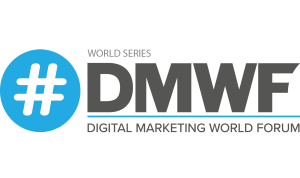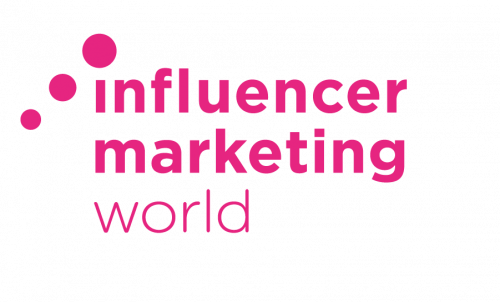Share

It’s been hard to miss Binge’s latest campaign promoting House of the Dragon, the prequel to the wildly popular Game of Thrones series. The inescapable three-month long effort – which finishes this month – dropped by Federation Square in Melbourne, a gelato store in Newtown, and toured Australia with a travelling Iron Throne, among other activations.
“At every touchpoint, around every corner and in every channel, people will be seeing and hearing about dragons,” said Binge’s executive director Alison Hurbert-Burns early in the takeover.
“House of the Dragon is the year’s biggest TV show, so naturally we wanted to go big with our campaign.”
With the help of agency partners Thinkerbell, Mindshare, We Are Social, Wonder and Habitat, Binge delivered the largest scale campaign it has ever implemented since launching in 2020.
But before blazing through city centres, House of the Dragon promo began in the much quieter Victorian town of Anglesea.
House of the Dragon visits Anglesea
Nestled at the beginning of the Great Ocean Road, where “bush meets sea”, Anglesea has a population of just over 3000 people, according to the last census. Another few thousand holidaymakers usually funnel into this popular destination over summer.
On a chilly winter morning on Thursday 18 August, a mysterious four-metre-high dragon egg appeared on the shore of the main beach.
The stunt garnered social media attention, spurred on by a video series across Matt ‘the Outback Wrangler’ Wright’s Instagram and TikTok, which showed him “discovering” the egg.
As soon as news outlets began reporting the story, Binge swiftly trucked the egg over to Federation Square for its next installation.
@mattwrightau Move a dragon’s egg into Melbourne without it hatching? No worries, she’ll be right! Thanks for lending a helping hand @binge #HouseoftheDragon #ad ♬ original sound – Matt Wright
A Targaryen egg on the Surf Coast is not the first time a massive brand campaign has landed in regional Australia.
Queer Eye drops by Yass
Netflix’s Queer Eye press tour in 2018 included a stopover in the rural New South Wales town Yass, where the Fab Five filmed a mini episode for social media.
The name Yass is believed to be derived from the Aboriginal word ‘Yharr’, meaning ‘running water’. Queer Eye’s marketing team, which also included We Are Social, adopted a different interpretation.
For anyone who knew the show, the location was a symbolic nod to cast member Jonathan Van Ness’ penchant for the ball culture catchphrase “yass queen”.
View this post on Instagram
Daft Punk in Wee Waa
And who can forget when Daft Punk, one of the most influential acts in dance music history, threw an album launch in Wee Waa, population 2000, in 2013.
News outlets and social media users kept asking the question: why Wee Waa? The place was unfamiliar even to most Australians.
But the continuous speculation was itself the answer. Without even having to attend the party in Australia’s Cotton Capital, the French duo’s earned media echoed around the globe.
Cities vs small communities
At the most simplistic level, bringing these big names to sleepy towns generates talking points, says Dr Susie Khamis, an associate professor and head of strategic communication at the University of Technology Sydney.
“On the one hand these are global, very cosmopolitan, very sort of ‘now’ brands, if you like, and to see them somehow just land in these regional outposts, it’s a bit like an alien: something exotic, something super glamorous and famous. Just that anomaly creates buzz,” she says.
“When there’s an element of intrigue or secrecy, you also motivate people to investigate some more and Google and think deeper. That kind of labour is so important for building investment in the story.”
Getting your brand name in lights in highly populated areas might seem like the obvious choice for marketers. But all three of these examples provide a compelling case for a quirky alternative.
“If they had just gone to the city centres, it might not necessarily have had the same ‘wow-factor’ because generally we’re very used to seeing our city centres awash with that kind of glamour or slick marketing,” says Khamis.
Brands can still reach city slickers and the wider community while visiting small towns, and perhaps with less red tape and a smaller budget. In the case of the House of the Dragon stunt, that broad social media audience was actually the target, more so than the locals taking pictures on their phones.
“It wasn’t long until the news spread and captured the attention of fans nationally, which was always our goal,” a Thinkerbell Spokesperson tells Marketing.
Tourism cashes in
In terms of who are the chief beneficiaries of these campaigns, it’s “layered and complex”, says Khamis.
“There’s kind of an economic and cultural logic at work here because, for example, more centralised tourism bureaus are really trying to open up tourists’ eyes beyond the obvious go-tos and landmarks.”
“The local tourism bureaus would no doubt love when these kinds of things happen because it brings a lot of positive energy, but also attention, to these outer areas,” she adds.
After Queer Eye came to Yass, its mayor told the ABC there was an influx of day trippers pumping money into the local economy. So much so, cafes started opening on Sundays.
It was essentially a free marketing campaign for the town. Even today, Yass Valley Tourism still milks its Queer Eye-tinerary.
While House of the Dragon, Queer Eye and Daft Punk’s campaigns were unique, they all drew tourism, locals, fans abroad and the brands themselves into the spectacle.
Pulled off organically, a big campaign in a small town can be a win-win for multiple stakeholders. The story sticks in the minds of otherwise distracted consumers and has the potential to live on, as it has on the Wee Waa website nearly a decade later.















